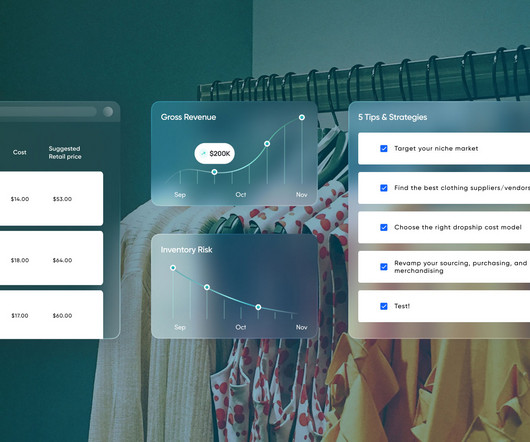A Modern Retailer’s Guide to Dropshipping Fashion & Apparel: Part 2
Fabric
MARCH 14, 2023
Welcome to Part 2 of The Modern Retailer’s Guide To Dropshipping Fashion and Apparel. In Part 1, we covered the basics of dropshipping and explored the reasons why every fashion retailer should switch from a traditional retail model to an asset-light dropship model. 5 Tips and Strategies for Dropshipping Fashion and Apparel 1.













Let's personalize your content